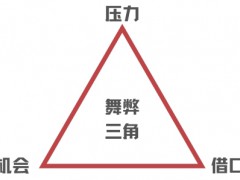據鉆機地帶7月29日報道,據雷斯塔能源稱,由于疫情導致全球需求下降,南美的鉆井和完井活動在2020年大幅放緩,預計今年將達到峰值。
雷斯塔表示,近海油井的反彈更為明顯,主要是受巴西和圭亞那石油活動增加的推動。隨著鉆井業務的全面復蘇,南美也奪回了全球新鉆井的市場份額,海上鉆井證明了這個突出的行業。
2014年,南美新鉆的油井占全球海上新井的8%,陸上新井占4%。
自那時以來,2014年底和次年油價暴跌之后,鉆井活動一直呈下降趨勢。
陸上鉆井活動在2016年急劇下降后趨于穩定,而海上鉆井活動的下降相對平穩。
2020年,由于年初暴發的新冠肺炎對全球市場造成嚴重破壞,該地區的新鉆井數量再次受到影響,與前一年相比減少了50%。2020年南美的鉆井活動僅占全球陸上活動的2%,海上活動的3%。
由于需求恢復以及石油和天然氣價格上漲,新井的數量此后有所增加。鉆井活動預計將在今年達到頂峰,然后在本世紀末出現另一個下降趨勢,部分原因是巴西在過去六年中發現的陸上石油儲量非常低,難以支撐長期增長。
未來幾年,該地區的海上鉆井活動仍將保持在全球活動的6%左右,陸上鉆井仍將維持在3%左右。
值得注意的是,盡管該地區海上油井數量明顯低于陸上油井數量,但海上油井產量占南美洲當前產量的近一半,預計到2024年,由于巴西和圭亞那的增產,海上油井產量將超過陸上產量。
南美洲另一個空前活躍的地區是阿根廷的瓦卡穆爾塔。隨著運營公司在Neuquén地區多產的瓦卡穆爾塔頁巖儲層采用水力壓裂技術,該國的產量進一步增長。
雖然生產活動處于歷史高位,但持續的供應鏈瓶頸表明,在未來幾個季度,增加投入生產活動的空間不大。
然而,考慮到該盆地的早期開發和改善型曲線,基礎遞減率仍然很低,未來幾年石油產量仍將顯著增長。
根據雷斯塔能源的研究顯示,該地區的產量明年初可能超過30萬桶/天,到2024年進一步增加到40萬桶/天,幫助該國的總產量反彈到近20年來從未見過的水平。
郝芬 譯自 鉆機地帶
原文如下:
Drilling In South America Set To Peak During 2022
Drilling and completion activity in South America is expected to peak this year after a significant slowdown in 2020 due to the global demand destruction brought on by the Covid-19 pandemic, Rystad Energy claimed.
According to Rystad, the rebound is more pronounced for offshore wells, primarily driven by an uptick in activity in Brazil and Guyana. With the overall recovery in drilling, South America is also winning back a global market share of new wells drilled, with offshore proving the standout sector.
New wells drilled in South America in 2014 contributed to 8 percent of new wells globally in the offshore sector and 4 percent in the onshore.
Activity has been on a downward trend since then following the slump in oil prices in late 2014 and the following year.
onshore drilling activity had a steep drop in 2016 before stabilizing, while offshore drilling activity saw a relatively smoother decline.
The number of new wells drilled in the region was hit again in 2020 with a 50 percent decrease recorded compared to the previous year, as the outbreak of Covid early in the year wreaked havoc on global markets. Drilling activity in South America in 2020 represented only 2 percent of the global onshore activity and 3 percent of offshore.
The number of new wells has since increased due to the return of demand and the oil and gas price increase. Activity is expected to peak this year before going on another downward trend towards the end of the decade, partially due to Brazil having very low discovered onshore volumes in the last six years, making it difficult to support long-term growth.
Offshore drilling activity in the region will remain at around 6 percent of global activity over the coming years, while onshore drilling will remain at around 3 percent.
It should be noted that, while the offshore well count in the region is significantly lower than that of onshore, offshore production makes up nearly half of South America’s current output and is expected to exceed onshore production by 2024 due to increases in Brazil and Guyana.
Another region in South America that is seeing all-time high activity is Argentina’s Vaca Muerta. The country recorded further production growth records, as operators step up fracking in the prolific Vaca Muerta shale formation in Neuquén.
While activity is at an all-time high, persistent supply chain bottlenecks suggest there is not a lot of room for incremental put-on production activity in the next few quarters.
Yet, with base decline remaining low given the basin’s early phase of development and the improving type curves, oil output is still poised for significant growth in the coming years.
The region’s production could exceed 300,000 barrels per day early next year, expanding further to 400,000 bpd in 2024, helping the country’s total rebound to levels not seen in nearly 20 years, Rystad Energy research shows.
免責聲明:本網轉載自其它媒體的文章及圖片,目的在于弘揚石化精神,傳遞更多石化信息,宣傳國家石化產業政策,展示國家石化產業形象,參與國際石化產業輿論競爭,提高國際石化產業話語權,并不代表本網贊同其觀點和對其真實性負責,在此我們謹向原作者和原媒體致以崇高敬意。如果您認為本站文章及圖片侵犯了您的版權,請與我們聯系,我們將第一時間刪除。







